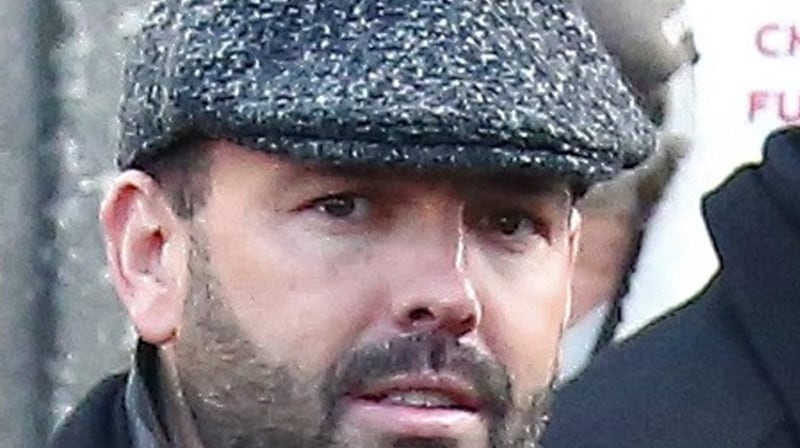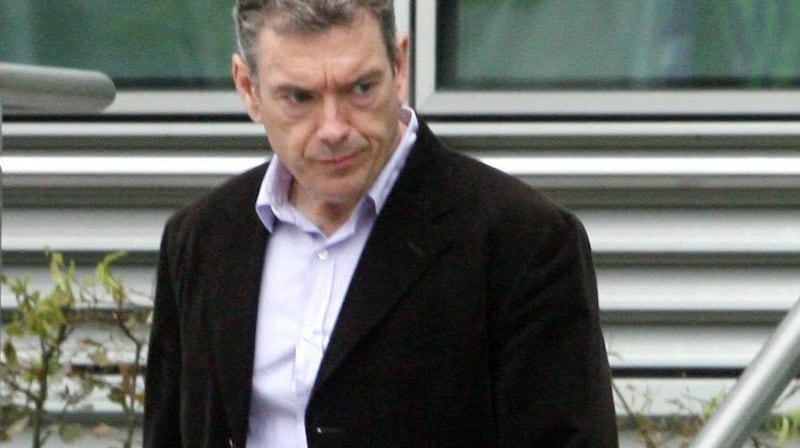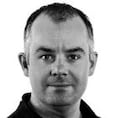Michael O’Sullivan remembers the day in 1986 when he first encountered Christy Kinahan. Then a 28-year-old, unemployed father of two, Dubliner Kinahan was already thinking big. He was caught with more heroin than anyone had ever seen in Ireland at that time. Yet O’Sullivan recalls Kinahan “knew absolutely nothing about the drugs business” back then.
O’Sullivan was cutting his teeth in organised crime policing in Dublin when he and his colleagues got a tip-off that a drug deal was about to take place in an apartment building in the city.
The young drug squad detective donned electrician’s overalls and pottered around the Crescent House apartment complex in Clontarf, pretending he was on an emergency call-out. It wasn’t long before O’Sullivan got his man; arresting Kinahan after he was spotted exchanging a parcel of heroin and money with a known drug dealer.


When gardaí searched the apartment he was renting they couldn’t believe their eyes. Some 130 grammes of heroin – valued at £117,000 – was found. “We [gardaí] wouldn’t have seized that amount of heroin in the State in a year at that time,” O’Sullivan says.
It may have been Kinahan’s first foray into the drugs business, but by the standards of 1980s Ireland it was top tier.
O’Sullivan remembers Kinahan – a fraudster to that point – having a red sports car, being well dressed and presenting as middle class. He would read books when he was being taken to and from court “and that was very unusual”. He could “switch from an Irish accent to a British accent” at will, and he was learning French in prison.
He was convicted and sentenced to six years, but told Judge Michael Moriarty: “I’ve been painted as a bete noire and have had no opportunity to vindicate myself.”
O’Sullivan says that while Kinahan was unknown at the time – and was ultimately caught red-handed – he was striving to join the “silent partner” criminal class; with many underlings whose strings he would pull. He was not a man “to get his hands dirty” and looked down on others who did.
“He was the type of guy you could sit beside on a plane or have a pint with and you’d think he was a nice guy. But behind it he was mercenary, he was ruthless,” recalls O’Sullivan. “He was a typical fraudster; bluffing bank managers and business people, pretending he was somebody he wasn’t.”
It was “highly unusual” to switch from fraud into drugs and Kinahan was “not typical at all” of the people involved in the drugs trade in Ireland at the time.
“Kinahan would try and beat you psychologically too; convince you black was white. I was out for a jog once near Croke Park and this car went past. I said to myself, ‘I’d swear that was Chris Kinahan, but it can’t be because he’s in jail’. As I continued on Jones’s Road, he was following me. So I stopped and bent down pretending to do my laces. Sure enough, the car went by me at a huge speed and I saw it was him.
“He said it to me years later: ‘You think you’re so clever, but I followed you’. I told him: ‘I saw you that day and I could tell you what you car reg was’. And I did tell him.”
Global business
O’Sullivan says Kinahan’s singular aim in 1986 was to run the heroin trade, adding “there was little or no cocaine” at the time.
“He knew absolutely nothing about the drugs business but this was his entry into it, and he was coming in at the top of the pyramid. Did I know at the time he would end up the [criminal] figure he is now? No. But that’s only because nobody at that time knew the drugs trade was going to become this huge global business. But did I think he’d end up a senior criminal running other criminals in Dublin? Definitely.”
In the years after locking up Kinahan, O’Sullivan rose through the ranks of the Garda, becoming head of the drugs squad and eventually assistant commissioner. After his time in the Irish police force, he became a leader of the Maritime Analysis and Operations Centre Narcotics in Portugal. MAOC-N is an EU agency established two decades ago to monitor and disrupt multimillion-euro consignments of drugs being moved around in sea freight – by men like Kinahan.
As O’Sullivan’s career progressed, so too did Christy Kinahan’s.
Last week US law enforcement put Kinahan, his two sons – Daniel and Christopher jnr – and four of their Irish associates on a financial sanctions list. It blocks them from the US banking system, from US airlines and from commercially dealing with people and companies in the US or having any assets there. The Americans have also offered a reward of up to $5 million for anyone who can supply information that damages the Kinahan cartel or that leads to the conviction of any of the three Kinahans.

Gregory Gatjanis, associate director of the US Office of Foreign Assets Control, said US law enforcement was now pursuing the Kinahans with the same vigour it targeted “Italy’s Camorra, Mexico’s Los Zetas, Japan’s Yakuza and Russia’s Izmaylovskaya”.
But how did a bluffer fraudster caught with 130 bags of heroin in a Dublin apartment in the 1980s end up becoming one of the US’s most wanted drugs kingpins? In a nutshell: he succeeded via increments and with ambition but has been undermined by his son Daniel’s love of the limelight, specifically in pro boxing.
On his release from prison for his 1986 heroin-related offence, Kinahan snr spent time living in Tamworth, England, and also in the Netherlands, where he was jailed for handling stolen property. In June 1993, he was caught in Dublin with a batch of stolen cheques. He fled to Tamworth and it was only when he returned to Dublin for his father’s funeral in October 1997, that he was arrested again. This time he was denied bail and was eventually convicted and jailed for four years.
On his release, around the year 2000, Kinahan relocated to Spain – the single biggest and most successful move of his criminal career. This is the juncture where the grand plans he harboured for himself when he was collared by Michael O’Sullivan in 1986 converted to reality.
By the time Kinahan snr went to Spain he had established useful drug-dealing contacts; his stints in prison proved productive in that regard. Southern Spain at the time was a wholesale hub for the European drugs market. In Ireland, the Celtic Tiger was just getting into its stride, with soaring disposable incomes fuelling exponential growth in the demand for drugs.
Container freight
Kinahan had already begun supplying drugs to the Dublin market by the time he was jailed in 1997. A teenage gang formed in Crumlin and Drimnagh effectively worked for him selling drugs in that southwest region of the city. Once in Spain, he shipped drugs back to that gang, hidden in container freight.
While the gang was initially headed by its founder, Kinahan, a very young Freddy Thompson assumed the captain’s armband when Kinahan moved to Spain. The gang soon split over unfounded allegations that one of its number was a Garda informer. The so-called Crumlin-Drimnagh feud ensued, with 15 men murdered during the decade to around 2010. In that period, the Dublin-based gang handled more and more of Kinahan’s product and the growing cartel also supplied other markets, including the UK.
When Thompson crossed the INLA in Dublin and was forced to flee the city or be murdered, his associate Liam Byrne took over the lead role in the Dublin-based gang. By this time, from around 2007, the Kinahan cartel was a major player in the European context and Kinahan’s sons were among its leaders.
Looking back, every warning light in law enforcement in Dublin and Madrid should have been flashing red, such was the rapidly growing power of the cartel. But in Spain, other international cartels were murdering people in the streets and so they were the policing priority, not the Kinahans. In Ireland, the many armed gangs of Dublin and Limerick were feuding and there were often more than 20 gangland murders in a year. Garda, like the Spanish police, were engaged in fire brigade policing – responding to each murder as it happened.
That all changed on February 4th, 2008. On that day the Kinahan cartel shot dead young Dubliner Paddy Doyle (27) near Marbella. The Spanish and Irish authorities were already tentatively co-operating on a joint investigation, of sorts, but it was ramped up after the Doyle murder. But it wasn’t until 2010 – 10 years into Kinahan’s growth phase on the Costa – that Operation Shovel resulted in a co-ordinated series of raids in Ireland, Spain, the UK and a host of other countries. More than 700 police officers were involved, with almost 40 arrests including 22 in Spain; Christy Kinahan was among them.
While the raids targeted the drug dealers, gun runners, enforcers and the accountants and solicitors who worked for the cartel, very little came of it. Only a handful of people were charged, years later, with minor offences before the other cases were dropped.
However, the investigation established that the cartel had assets – including property and cash – and a huge money-laundering network that spanned Ireland, the UK, Spain, Belgium, the Netherlands, France, Cyprus, Greece, Lithuania, Poland, Gibraltar, Switzerland, Liechtenstein, Morocco, South Africa, China, Dubai, Panama, the Dominican Republic, Brazil and the US.
By 2015, the cases under Operation Shovel against the three Kinahans – and others – had been officially discontinued. It later emerged that the cartel had bribed some members of the Spanish law enforcement community.
Turning point
Then came another turning point. In a moment equal in significance in the cartel’s history to Kinahan snr moving to Spain, it shot dead Gary Hutch near Fuengirola in Spain in September 2015. The murder of the 34-year-old Dubliner – after he had tried to shoot Daniel Kinahan in a row over money – sparked a major feud between the cartel and Hutch’s associates in Dublin.
That Kinahan-Hutch feud has since resulted in 18 murders, mostly in Ireland.
In February, 2016 a spectacular effort was made by a group of men wearing mock Garda uniforms, and armed with AK-47s, to murder Daniel Kinahan at a boxing tournament weigh-in at the Regency Hotel, Dublin. It sparked the best-resourced Garda operation ever witnessed against Irish organised crime. And while the killings continued for a number of years, the Garda has slowly ground the feud to a halt.
In the courts – and specifically against the Kinahan side of the feud – the Garda has secured 79 convictions in the past six years, including 12 on murder-related charges, 23 on attempted murder charges, 13 for firearms offences, 17 for drug trafficking and 17 for money laundering.
The Kinahans have also fled from Spain to Dubai, a haven for organised crime gang bosses and with no extradition arrangements with Ireland. In the UK, the cartel’s operation was decapitated two weeks ago with the jailing for 21 years of the cartel’s leader there, Thomas “Bomber” Kavanagh, for trafficking drugs.
With those operations in Ireland and Britain having run as far as they can for now, the Garda has persuaded the Americans to become involved. It is believed that since the Kinahans have lived abroad for so long – and their drug gang is so transnational – getting them back to Ireland to face trial will be very difficult. The US approach to law enforcement – in particular its catch-all charges for money-laundering conspiracies and racketeering – may snare the cartel leaders for their transnational crimes. So the theory goes.
Security sources say the Garda effort to persuade the US to officially come onto the pitch against the Kinahans has taken about three years. They add that two aspects of the cartel’s operations proved crucial in convincing the Americans.
First, Daniel Kinahan’s increasingly public ascent as a powerful broker in pro boxing was seen as something that had to be challenged via sanctions. Gardaí believe Kinahan’s stepping into the limelight via his involvement in the sport is the single biggest mistake the cartel has made. Second, the scale of the Kinahans’ money laundering through US banks and other companies also persuaded the Americans to target the cartel’s leadership.
American law enforcement this week spectacularly declared war on the biggest gangsters Ireland has ever produced, with sanctions and $5 million rewards. Christy Kinahan snr’s early dreams of the big time were realised. But after a week from hell for his cartel, heavy is the head that wears the crown.




















